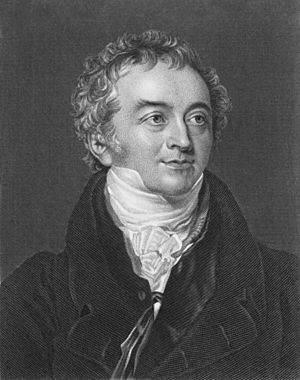History of energy facts for kids
The word energy comes from the Greek word ἐνέργεια (energeia). This word first appeared in the writings of Aristotle in the 4th century BCE. He used it in books like Physics and Metaphysics.

The idea of energy we use today grew from an older concept called vis viva, which means "living force." Leibniz, a famous scientist, described vis viva as an object's mass multiplied by its speed squared. He believed that the total vis viva in a system always stayed the same. Even when things slowed down due to friction, Leibniz thought the lost vis viva turned into heat, which was the tiny, random movement of particles.
Émilie du Châtelet, a brilliant scientist, wrote a book called Institutions de Physique in 1740. In it, she combined Leibniz's ideas with real-world observations. She showed that the "quantity of motion" of an object was related to its mass and its speed squared. This was different from what Isaac Newton had taught, which was later called momentum.
In 1802, Thomas Young gave lectures where he first used the word energy in the way we understand it now, instead of vis viva. He wrote in 1807:
The product of the mass of a body into the square of its velocity may properly be termed its energy.
Later, in 1829, Gustave-Gaspard Coriolis described "kinetic energy" (the energy of motion). In 1853, William Rankine created the term "potential energy" (stored energy). For a while, scientists debated if energy was a physical substance or just a measurable quantity.
Understanding Energy: Thermodynamics
The invention of steam engines in the 1800s pushed engineers to understand how these machines worked. They wanted to know how efficient their engines were at turning heat into useful work. Engineers like Sadi Carnot and physicists like James Prescott Joule helped develop new ideas. They realized that the ability to do work was connected to the amount of energy in a system.
In the 1850s, William Thomson (also known as Lord Kelvin) and William Rankine started using terms like actual energy, kinetic energy, and potential energy. Lord Kelvin brought together many of these ideas into the laws of thermodynamics. These laws helped explain chemical processes using the concept of energy. They also led to the idea of entropy, which measures the loss of useful energy.
In 1881, William Thomson explained how important the concept of energy had become:
The very name energy, though first used in its present sense by Dr Thomas Young about the beginning of this century, has only come into use practically after the doctrine which defines it had ... been raised from mere formula of mathematical dynamics to the position it now holds of a principle pervading all nature and guiding the investigator in the field of science.
For about 30 years, this new science was called different names, like "the dynamical theory of heat." But after the 1920s, it became known as thermodynamics. This is the science that studies how energy changes from one form to another.
Since the 1850s, the study of energy has grown into many different fields. These include biological thermodynamics (energy in living things) and thermoeconomics (energy in economic systems). Other related terms also became important, such as power, which is how much energy is used per unit of time.
Energy Always Stays the Same: Conservation of Energy
In 1918, scientists proved that the law of conservation of energy is a direct result of how the laws of physics work over time. This means energy is conserved because the laws of physics are the same at any moment in time.
Richard Feynman, a famous physics teacher and Nobel Prize winner, explained the idea of energy in a lecture in 1961:
There is a fact, or if you wish, a law, governing natural phenomena that are known to date. There is no known exception to this law—it is exact so far we know. The law is called conservation of energy; it states that there is a certain quantity, which we call energy that does not change in manifold changes which nature undergoes. That is a most abstract idea, because it is a mathematical principle; it says that there is a numerical quantity, which does not change when something happens. It is not a description of a mechanism, or anything concrete; it is just a strange fact that we can calculate some number, and when we finish watching nature go through her tricks and calculate the number again, it is the same.
—The Feynman Lectures on Physics
Simply put, the law of conservation of energy means that energy cannot be created or destroyed. It can only change from one form to another. For example, the chemical energy in food can change into the kinetic energy of your moving body. The total amount of energy in the universe always stays the same.
See also
 In Spanish: Historia de la energía para niños
In Spanish: Historia de la energía para niños
- Timeline of thermodynamics
- History of physics
- History of the conservation of energy principle
- History of thermodynamics
- Caloric theory

